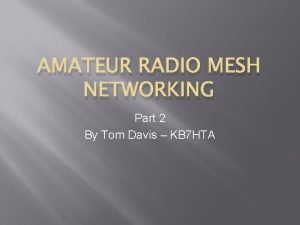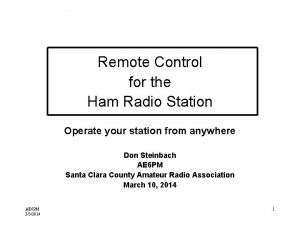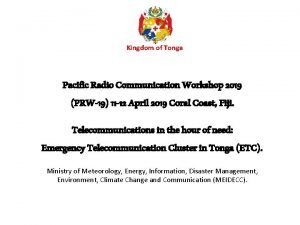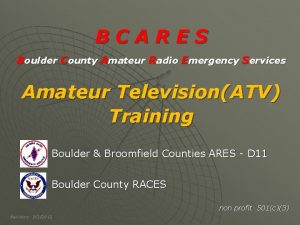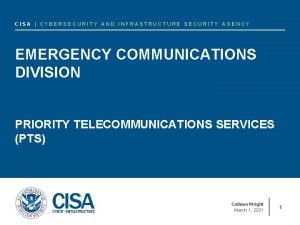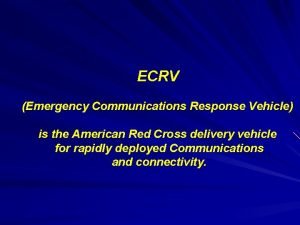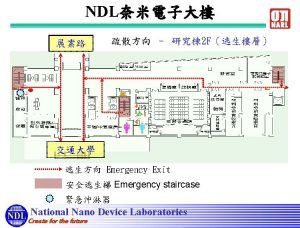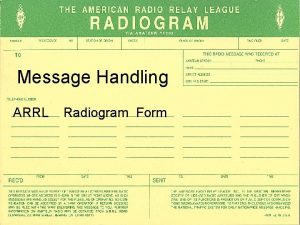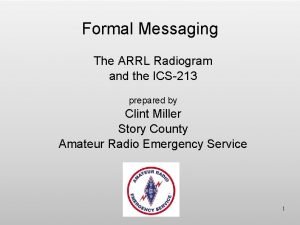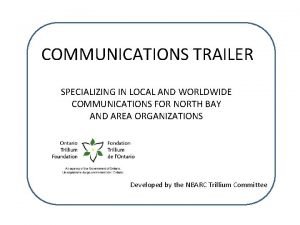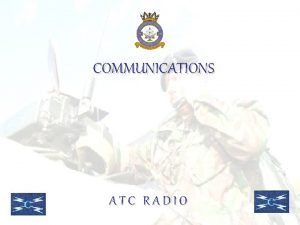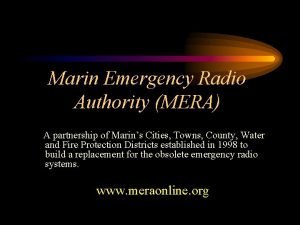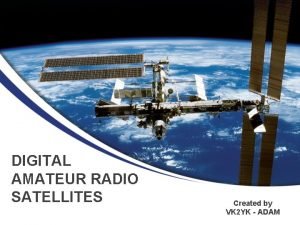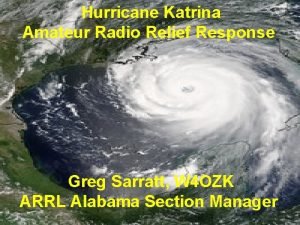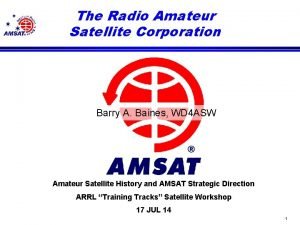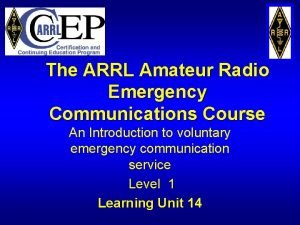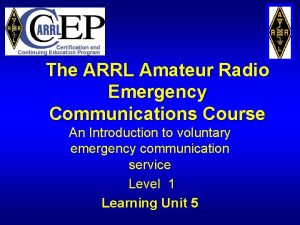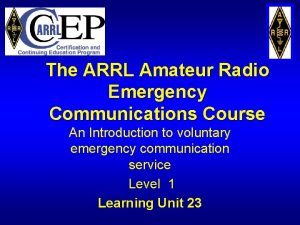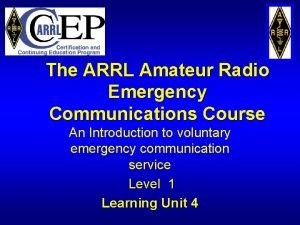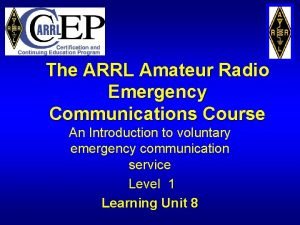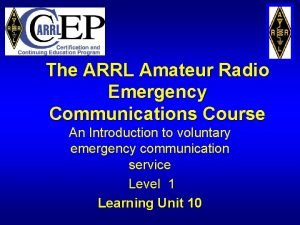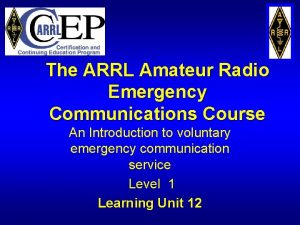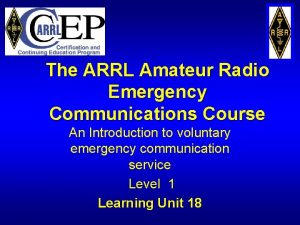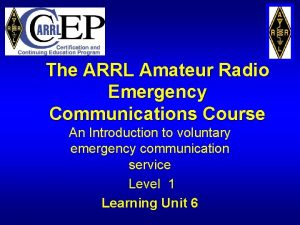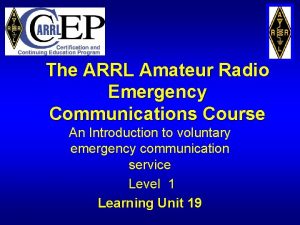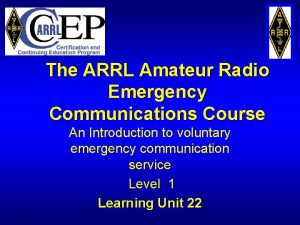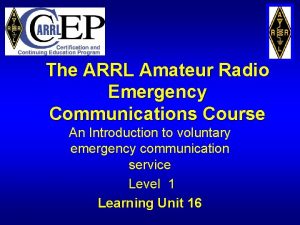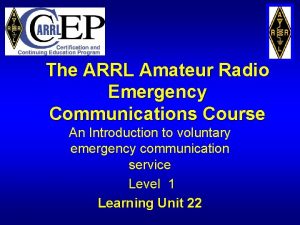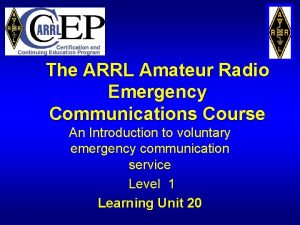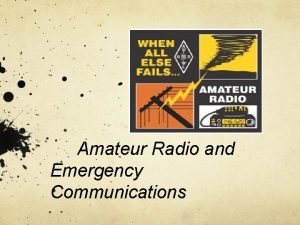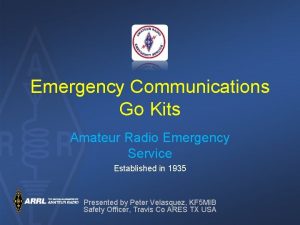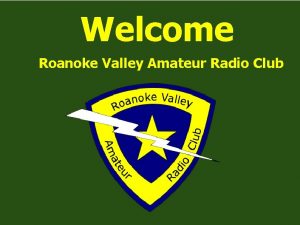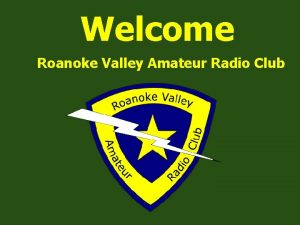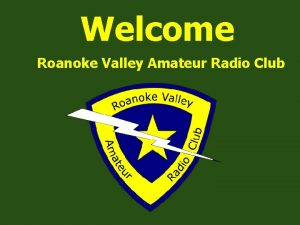The ARRL Amateur Radio Emergency Communications Course An






























- Slides: 30

The ARRL Amateur Radio Emergency Communications Course An Introduction to voluntary emergency communication service Level 1 Learning Unit 11

The Incident Command System Learning Unit 11 Objectives: Following completion of this Learning Unit, you will understand the Incident Command System (ICS) concept, and how it is used to coordinate and unify multiple agencies during emergencies.

The Incident Command System Learning Unit 11 Student preparation required: None

Information: ICS is one of the key elements of the National Incident Management system (NIMS). This lesson is a summary of ICS and its relationship to emcomm, and not a complete description of ICS's various forms and uses. Please see the Resource links section at the end of the lesson for information on formal ICS training opportunities.

The History of ICS In the early 1970 s, a disorganized and ineffective multi-agency response to a series of major wildland fires in Southern California prompted municipal, county, state, and federal fire authorities to form an organization known as Firefighting Resources of California Organized for Potential Emergencies (FIRESCOPE). California authorities had found that a lack of coordination and cooperation between the various responding agencies resulted in over-lapping efforts, and gaps in the overall response. Many specific problems involving multi-agency responses were identified by FIRESCOPE. These included poor overall organization, ineffective communication between agencies, lack of accountability, and the lack of a single, universal, and well-defined command structure. Their efforts to address these difficulties resulted in the development of the original Incident Command System. Although developed for wild land fires, the system ultimately evolved into an "all-risk" system, appropriate for all types of fire and non-fire emergencies.

The History of ICS There are other versions of the ICS in use, but the Incident Command System (ICS), as developed by the National Fire Academy (NFA), has been widely recognized as a model tool for the command, control, and coordination of resources and personnel at the scene of an emergency and is used by most fire, police, and other agencies around the country. The use of the ICS is now required by various federal laws for all hazardous material incidents, and in other situations by many state and local laws. The ICS has also been adopted for use in many other countries.

What is the ICS? The Incident Command System is a management tool designed to bring multiple responding agencies, including those from different jurisdictions, together under a single overall command structure. Before the use of the ICS became commonplace, various agencies responding to a disaster often fought for control, duplicated efforts, missed critical needs, and generally reduced the potential effectiveness of the response. Under ICS, each agency recognizes one "lead" coordinating agency and person, will handle one or more tasks that are part of a single over-all plan, and interact with other agencies in defined ways. The Incident Command System is based upon simple and proven business management principles. In a business or government agency, managers and leaders perform the basic daily tasks of planning, directing, organizing, coordinating, communicating, delegating, and evaluating.

What is the ICS? The same is true for the Incident Command System, but the responsibilities are often shared between several agencies. These tasks, or functional areas as they are known in the ICS, are performed under the overall direction of a single Incident Commander (IC) in a coordinated manner, even with multiple agencies and across jurisdictional lines.

What the ICS is not Many people who have not studied the full details of the Incident Command System have a variety of erroneous perceptions about what the system means to them and their agencies. To set the record straight, the Incident Command System is not: • A fixed and unchangeable system for managing an incident. • A means to take control or authority away from agencies or departments that participate in the response. • A way to subvert the normal chain of command within a department or agency. • Always managed by the fire department - or the first agency to arrive onscene. . • Too big and cumbersome to be used in small, everyday events. • Restricted to use by government agencies and departments.

The ICS Structure Management by objectives: Four essential steps are used in developing the response to every incident, regardless of size or complexity: • Understand the policies, procedures, and statutes that affect the official response. • Establish incident objectives (the desired outcome of the agencies' efforts). • Select appropriate strategies for cooperation and resource utilization. • Apply tactics most likely to accomplish objectives (assign the correct resources and monitor the results). The complexity of the incident will determine how formally the "management by objectives" portion will be handled. If the incident is small and uncomplicated, the process can be handled by verbal communication between appropriate people. As the incident and response become more complex, differences between the individual agencies' or departments' goals, objectives, and methods will need to be resolved in writing.

The ICS Structure Organizational structure: The ICS supports the creation of a flexible organizational structure that can be modified to meet changing conditions. Under the ICS, the one person in charge is always called the "Incident Commander" (IC). In large responses, the IC may have a "General Staff" consisting of the Information, Safety, and Liaison Officers. In a smaller incident, the IC may also handle one, two, or all three of these positions, if they are needed at all. Various other tasks within the ICS are subdivided into four major operating sections: Planning, Operations, Logistics, and Finance/Administration. Each operating section has its own "chief, " and may have various "task forces" working on specific goals. The Logistics section handles the coordination of all interagency communication infrastructures involved in the response, including Amateur Radio when it is used in that capacity. These operating sections may be scaled up or down, depending on the needs of the situation. In a small, single agency response, the IC may handle many or all functions. As the size and complexity of a response increase, and as other agencies become involved, the various tasks can be re-assigned and sub-divided.

The ICS Structure Organizational structure: For instance, if the only responding agency is the fire department, communications will be handled according to existing department policies. If the incident expands, more agencies become involved, and other communication assets are required, a Logistics Chief may handle communication decisions along with other tasks, or assign the job to a "communication task force leader" as his own workload increases.

The ICS Structure The Incident Commander: The initial IC is usually the most senior on-scene officer from the first responding agency. The IC is responsible for the management of the incident and starts the process by helping setting initial incident objectives, followed by an "Incident Plan" (IP). In a small incident, the IC may do all the ICS functions without aid, but in a larger incident, they will usually delegate responsibilities to others. The IC still has overall responsibility for the incident, regardless of any duties delegated. The persons filling certain ICS positions may change several times during an incident as the needs of the response change. For instance, in the early stages of a hazardous materials spill, the Incident Commander may be a fire department officer. As the Coast Guard or other federal agency arrives to begin cleanup efforts, one of their officers will become the Incident Commander.



How does an emcomm group "fit in" to the ICS Involvement in any incident where ICS is used is by “invitation only” – there is no role for off-the-street volunteers. The relationship of an emcomm group to the ICS structure will vary with the specific situation. If your group is providing internal communication support to only one responding agency, and has no need to communicate with other agencies that are part of the ICS, you may not have any part in the ICS structure itself except through your served agency. If your group is tasked with handling inter-agency communications, or serves more than one agency's internal communication needs, it is likely your group will have a representative on the Logistics Section's "communication task force. " In certain situations, an emcomm group might serve one or more agencies simultaneously. As the responsibility for managing the incident shifts from one agency to another, the emcomm group's mission may shift to assisting the new lead agency, or simply end. In some cases, your group might begin by supporting your own served agency, and end up supporting a new and unfamiliar agency.

How does an emcomm group "fit in" to the ICS The choice of whether to use your emcomm group's services may be made by the served agency, Communications Task Force leader, Logistics Chief, or Incident Commander, depending on the specific situation and the degree of ICS structure in use.

Review The ICS is a management tool that preserves the command structure of each responding agency, while bringing them all together under a common plan and leader. Emcomm groups often operate as part of the Logistics section of the ICS. If the emcomm group serves the internal communication needs of only one agency, it may not be a formal part of the ICS structure.

Student Activity 1. Contact a leader of your local emcomm group. Ask the leader: A. if the emcomm group is affiliated with a specific agency; B. if there is a local, planned ICS structure and if so; C. how the emcomm group fits into the local ICS structure. 2. Contact a leader of your local emcomm group. Ask the leader if the emcomm group has ever been activated. If so, what were the lessons learned from operating with local agencies? 3. Suppose that during an emergency activation, you find yourself to be the leader of the local emcomm group. To which agency would you report? To whom within the agency would you report? What would your duties be as leader of the emcomm group?

Question 1 What do the letters "ICS" stand for? A. International Correspondence School B. Incident Command System C. Institutional Control System D. Internal Control Sequence

Answer 1 What do the letters "ICS" stand for? B. Incident Command System

Question 2 What is ICS? A. A management tool for coordinating the resources of several agencies within a single command structure. B. fixed and unchangeable system for managing an incident. C. A means of subverting the normal command structure within an agency or department. D. A management system restricted to use by government agencies and departments.

Answer 2 What is ICS? A. A management tool for coordinating the resources of several agencies within a single command structure.

Question 3 The ICS has two interrelated parts. What are they? A. A mission statement and management objectives. B. Management by objectives and organizational structure. C. Organizational structure and a financial plan. D. A financial plan and an operational plan.

Answer 3 The ICS has two interrelated parts. What are they? B. Management by objectives and organizational structure.

Question 4 Aside from the Incident Commander, there are four other major operating sections within an ICS. What are they? A. Planning, Operations, Logistics and Public Relations B. Personnel, Planning, Operations and Finance/Administration C. Planning, Operations, Logistics, and Finance/Administration D. Payroll, Finance/Administration, Logistics and Operations

Answer 4 Aside from the Incident Commander, there are four other major operating sections within an ICS. What are they? C. Planning, Operations, Logistics, and Finance/Administration

Question 5 What is an emcomm group's relationship to the ICS structure during an incident? A. The emcomm group always serves within the Logistics area. B. The emcomm group may or may not be a formal part of the ICS structure. C. The emcomm group always serves the Task Force leader directly. D. The emcomm group always serves the Incident Commander directly.

Answer 5 What is an emcomm group's relationship to the ICS structure during an incident? B. The emcomm group may or may not be a formal part of the ICS structure.

 Amateur radio digital communications
Amateur radio digital communications Chelmsford amateur radio society
Chelmsford amateur radio society Linkcalc ubnt
Linkcalc ubnt Bbhn
Bbhn Ham radio deluxe remote control
Ham radio deluxe remote control Chelmsford amateur radio society
Chelmsford amateur radio society Ham radio in tonga
Ham radio in tonga Chelmsford amateur radio society
Chelmsford amateur radio society Bcares
Bcares Cisa ecd
Cisa ecd Emergency communications response vehicle
Emergency communications response vehicle National emergency communications plan
National emergency communications plan Arrl field day rules
Arrl field day rules Arrl logbook
Arrl logbook Arrl radiogram
Arrl radiogram Travelplus for repeaters
Travelplus for repeaters Arrl logbook
Arrl logbook Arrl radiogram
Arrl radiogram Arrl grounding and bonding
Arrl grounding and bonding Communications trailer
Communications trailer Atc communications and radio procedures
Atc communications and radio procedures Marin emergency radio authority
Marin emergency radio authority Trunking vs conventional radio system
Trunking vs conventional radio system Signalink usb occasion
Signalink usb occasion Katrina amateur
Katrina amateur Amateur insemination
Amateur insemination Where may ssb phone be used in amateur bands above 50 mhz?
Where may ssb phone be used in amateur bands above 50 mhz? Orbiting jupiter vk
Orbiting jupiter vk Amateur sdx
Amateur sdx Telescopio amateur
Telescopio amateur Random amateur
Random amateur


